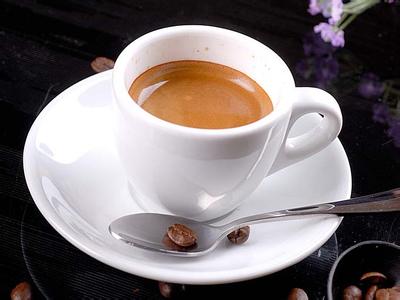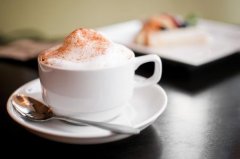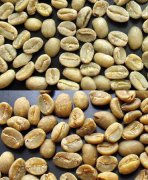How to choose and buy coffee pot and freshness of coffee beans are important factors affecting quality.

Now the coffee pots on the market are all drip-type, and they are divided into Japanese style, American style and Italian style.
The Japanese coffee maker, also known as the siphon pot, has an alcohol lamp on the base and two glass balls on it. It heats the water from the lower glass ball to produce water vapor, pushes the hot water from the lower sphere to the upper pot, and then sucks back the coffee extracted from the upper glass ball after the lower pot cools. Making coffee in a Japanese coffee pot seems to have the interest of doing a chemical experiment. But burning requires a certain amount of technology, and you have to use your hands to shake the alcohol lamp below to control the temperature. It is suitable for people who have time and leisure. Japanese coffee pot requires coffee beans to be ground slightly, which is suitable for single coffee with slightly sour taste.
The American coffee maker is basically a coffee machine brewed by electric power, which is suitable for coffee roasted in medium or deep depth, with slightly fine grinding particles and bitter taste. The American coffee maker has the function of heat preservation, but if the heat preservation time is too long, the coffee will easily turn sour.
The espresso pot is a machine that allows steam to quickly extract coffee through coffee powder through high pressure and high temperature. the best temperature for brewing coffee is between 90 and 98 degrees Celsius. Household espresso pots often have a bubbling mouth to make cappuccinos, and often have the function of keeping the cup warm, which is a very important detail. If you hold coffee in a cold cup, it tastes bad.
How to choose coffee beans
No matter what kind of coffee beans, freshness is an important factor affecting the quality. When shopping, grab one or two coffee beans and chew them in your mouth. If the coffee beans are crisp and sound, and the tooth pods stay fragrant is the top grade, but it is best to squeeze them with your hands to feel whether they are solid, rather than buying empty-shell coffee.
If the coffee bean has lost its fragrance or smells stale, it means that the coffee bean is no longer fresh and is not suitable for purchase.
Freshly fried coffee beans are not suitable for immediate consumption and should be stored for a week to completely release the gas from the beans.
Generally speaking, the best drinking period for coffee is a week after stir-frying, when the coffee is the freshest and the Aroma is the best.
In addition, the purity of coffee beans is also another consideration. The expert candidate for coffee is not necessarily looking at the size of the particles, but grabbing a handful of individual coffee beans (Regional Coffee), about dozens of portions, to see whether the color of each single bean is the same, and whether the particles are similar in size and shape, so as to avoid buying shoddy products disguised as mixed beans. But if it is a synthetic bean (BlendedCoffee), it is a normal phenomenon that the size and color are different. And heavy heat and medium-deep roasting will cause coffee beans to produce oil, but lightly roasted beans, if they produce oil, indicate that they have gone bad, not only reducing aroma, but also astringent and sour taste. In short, when buying added coffee, we should pay attention to its freshness, aroma and stale flavor, and the ideal purchase quantity is to be able to drink it in half a month.
Important Notice :
前街咖啡 FrontStreet Coffee has moved to new addredd:
FrontStreet Coffee Address: 315,Donghua East Road,GuangZhou
Tel:020 38364473
- Prev

Colombian Coffee, the main coffee bean in Taiwan market
Coffee trees are small shrubs growing in tropical highlands. Their fruits are red or yellow, and the seeds inside are what we call coffee beans. At present, coffee beans are grown in about 66 countries in the world, among which they can be classified as Arabica, Robusta and Liberica. Arabica is the largest major variety of coffee beans, accounting for about 80% of its aroma and quality. And Rob
- Next

There are two methods for grading raw coffee beans in terms of sieve size, size
There are two ways to classify raw coffee beans, one is the filter number, and the other is the elevation. It is divided by the filter number, and the size is size in terms of the screen size. Round beans are generally smaller than flat beans, between 8-13 and 12-29. 8, 9, 10. 12, 13. 18. 29 = small, medium, ordinary. Quasi-big. Big, extra large. The bigger the size, the bigger the beans. Like SC-.
Related
- Guji coffee producing area of Guji, Ethiopia: Humbela, Shakiso, Wulaga
- What is the most expensive variety of Qiloso in BOP multi-variety group?
- How to store the coffee beans bought home?
- Why are Yemeni coffee beans so rare now?
- Ethiopian Sidamo all Red Fruit Sun Sun Santa Vini Coffee beans
- SOE is mostly sour? What does it mean? Is it a single bean? what's the difference between it and Italian blending?
- Is Italian coffee beans suitable for making hand-brewed coffee?
- How to choose coffee beans when making cold coffee? What kind of coffee beans are suitable for making cold coffee?
- Just entered the pit to make coffee, what kind of coffee beans should be chosen?
- Can only Japan buy real Blue Mountain Coffee? What are authentic Jamaican Blue Mountain coffee beans?

